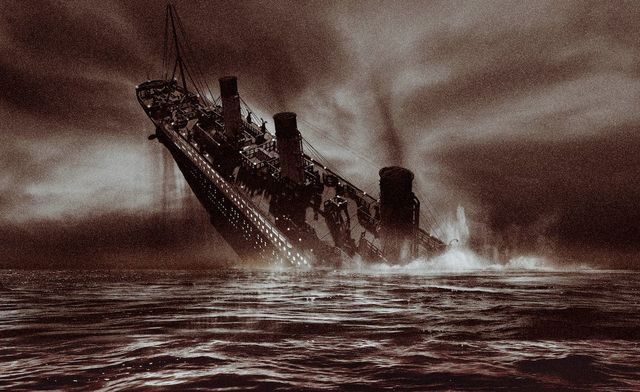The story of John Horgan, the Titanic victim from Ireland who disappeared, his fate unknown.
Editor's note: On April 15, 1912, the Belfast-built RMS Titanic sank after colliding with an iceberg, killing over 1,500 passengers and crew on board. This was one of the deadliest commercial peacetime maritime disasters in modern history and among those on board were many Irish.
IrishCentral takes a look at the Irish on board – the lucky, unlucky and heroic.
This is an extract from the book “The Irish Aboard the Titanic” by Senan Molony which tells the tales of the people who were on board the night the ship went down. This book gives those people a voice. In it are stories of agony, luck, self-sacrifice, dramatic escapes, and heroes left behind.
John Horgan
Ticket number 370377.
Paid £7 15s.
Boarded at Queenstown. Third Class.
From: Cork/Limerick?
Destination: New York.
The ‘Quiet Man’ could be applied to John Horgan, whose name appears on the embarkation records for the Titanic, but whose disappearance led to not a single newspaper reference, nor any legal action against the Oceanic Steam Navigation Company, nor any charitable disbursement, nor even a death notice nor a legal move for administration of his estate.
John Horgan certainly existed – but whether he embarked on the Titanic, or was replaced by someone using his ticket, is another matter. It will remain a mystery while Horgan’s own origins remain unclear.
What is known is that John Horgan was listed to sail on the Cymric, from Queenstown, on Easter Sunday, 7 April 1912. He did not board that vessel – instead, all the Cymric's passengers were transferred to the Titanic when the Cymric did not sail.
A man called ‘John Horgan’ did board the Titanic on Thursday, April 11, 1912. Later, in listing the Irish victims, the Irish World in New York referred to Horgan as being from County Limerick. It is also true that he came to the Titanic at Queenstown in the company of six other passengers from County Limerick. They were among the last to board, and it is known that the connecting train from Cork to Queenstown was late arriving at Deepwater Quay on that day. But it is also possible that John Horgan might have sold his ticket and this would explain the lack of newspaper references to anyone mourning his passing.
It is known that William O’Doherty, a Cork publican, bought the ticket assigned to a James Moran, and died in the disaster in the latter’s name. O’Doherty was friends with another tavern worker, 19-year-old Timothy O’Brien, whom the Cork newspapers also insisted had gone down on the Titanic. But Timothy O’Brien does not appear on the list of passengers. Is it possible that he followed his friend O’Doherty’s example and bought his ticket from John Horgan? The Cork Examiner of April 17, 1912, in a section headed ‘Believed Passengers,’ referred to ‘William Doherty [sic], 12 Old Market Place, employed by Messrs W. F. O’Callaghan, Daunt’s Square, and Timothy O’Brien, billiard marker at the Oyster Tavern’. The rival Cork Constitution newspaper made the same pairing in the same day’s edition.
The Mansion House relief fund does not list John Horgan among its Irish cases in its March 1913 report but mentions a claimant mother of the surname Landers. It may be that Horgan sold to O’Brien, who in turn sold to Landers, but the case is mysterious. Daniel Landers of Castletown Conyers, County Limerick, is a likely candidate – most of his siblings had preceded him to New York.
“The Irish Aboard the Titanic” by Senan Molony is available online.




Comments